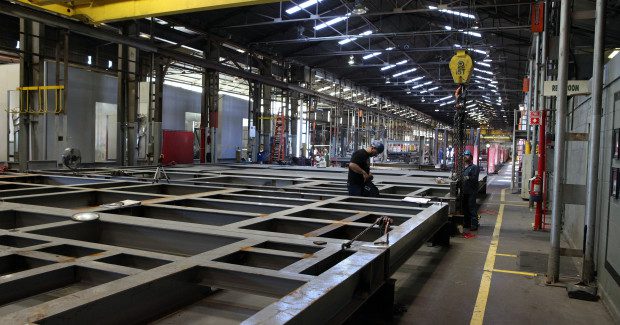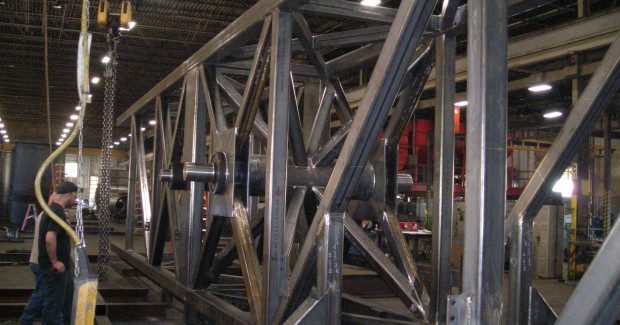How to Protect Against Liability for Contractor Employee Injury
When an employee of a contractor is injured in a manufacturing plant, the owner of the plant becomes a prime target for a lawsuit. An indemnification agreement can be a shield of protection against this liability – if it is used properly.
Posted: July 31, 2015
Safety is the Number One priority for well-run manufacturing operations. When these plants hire contractors to do construction, maintenance, installation or repairs in or around their facilities, they typically provide on-site safety training to the employees of the contractors. Furthermore, careful purchasing managers only send RFQs (requests for quotes) to vendors who properly train and supervise employees. But in spite of the best efforts, on-site accidents involving vendor employees still occur frequently. And when such an incident happens, the owner of the manufacturing site where the accident happened is a prime target for a lawsuit by the injured employee.
The contractor who is the employer of the injured employee is required to have workers’ compensation coverage for employees’ injuries, so why should the site owner be concerned? The reason is that workers’ compensation laws cap amounts that an injured employee can collect, and workers’ compensation awards are based on covering the injured workers’ costs, expenses and lost wages – not pain and suffering, or punitive damages.
However, if an injured worker sues the owner of the business where the accident happened, the workers’ compensation cap does not apply. This means the potential for a multi-million dollar award exists at any time that a serious accident has occurred. In today’s litigious climate, a manufacturer should expect to be sued by any contractor employee who is injured on site . . . unfortunately, this has become a fact of doing business.
So how to protect against this liability? Of course, most manufacturers have liability insurance. But many others also have large deductibles that must be paid out of pocket before the insurance coverage begins. And anyone who makes a large claim on a liability insurance policy is almost certain to see increased premiums for the foreseeable future.
One way a site owner can protect against this liability without making a claim on its insurance policy is through the use of an indemnity or service provider agreement between the site owner and the contractor (referred to here as an “indemnification agreement”). Pursuant to an indemnification agreement, the contractor indemnifies the site owner against any claims, losses or damages resulting from the contractor’s work on the site, including claims resulting from injuries incurred by employees of the contractor on the site.
Indemnification results in a shifting of the responsibility to pay costs and damages. Such indemnification of the site owner does not mean that the injured employee cannot sue the site owner; the injured employee is not a party to the Indemnification Agreement, so is free to sue the site owner. However, when the injured employee sues the site owner, the site owner is able to turn all the costs, expenses and damages associated with the claim by the injured employee over to the contractor who signed the indemnification agreement.
The broadest and best form of indemnification agreement (from the site owner’s perspective) is one that indemnifies the site owner even if the cause of the injury is found to be, in whole or in part, attributable to the site owner’s negligence. With this form of broad indemnification, a site owner can avoid a battle with the contractor over which of them was negligent, or their comparative negligence – and just turn the costs and liabilities associated with the injured employee’s lawsuit over to the contractor. This also incentivizes a contractor to pay serious attention to safety at the work site.
Broad indemnification is best for a site owner, but there is a bias in the law against indemnification. Agreeing to be responsible for another person’s negligence – in this case, the contractor’s agreement to indemnify the site owner for any claims of the contractor’s employees, even if the site owner was negligent – is a significant undertaking. The law in many states prohibits certain types of indemnification. This sort of legislation is referred to as an “anti-indemnity” statute. Over 40 states have some form of anti-indemnity statute, but these statutes have wide-ranging differences.
For example, the state law might prohibit indemnification only if the indemnified party was solely at fault. Some states prohibit indemnification even for the indemnified party’s partial negligence. Most “anti-indemnity” statutes apply only to indemnity provisions in construction contracts. How “construction” is defined and applied ranges widely. Some “anti-indemnity” statues apply only in public (governmental) projects. And the laws have important exclusions.
In Texas, for instance, the anti-indemnity statute does not apply to “a claim for the bodily injury or death of an employee of the indemnitor, its agent or its subcontractor of any tier.” (See Texas Insurance Code Section 151.103 (West Supp. 2013). This means in Texas the broad form of indemnification agreement would still be enforceable in a construction contract if limited to claims for bodily injury or death of an employee of a contractor or subcontractor. However, states (including states that do not prohibit certain types of indemnification) often have common law requirements that must be fulfilled in order for the indemnification to be enforceable. For example, while Pennsylvania does not prohibit broad indemnification, the courts have imposed certain requirements, such as language ensuring that the grant of indemnification for the indemnified party’s negligence is clear and unequivocal.
Drafting an enforceable indemnification agreement is complicated, because the enforceability of an indemnification agreement, as discussed above, varies from state to state and changes from one circumstance to another. Because of the complexity of the law, many of the indemnification agreements currently being used by manufacturers are defective. Unfortunately, companies using defective indemnification agreements typically only find out that their agreements are defective after a serious accident happens – when it is too late.
Purchasing managers at plants that use indemnification agreements that protect site owners against their own negligence will be quick to agree that it is difficult to get such agreements signed. It is best to include them in the RFQ package and require any company that bids on the project to submit a signed indemnification agreement with its bid. Even then, the purchasing manager will often face grumbling, refusals to sign, and suggested edits to the form indemnification agreement. They must negotiate deftly and firmly through such resistance to obtain a signed indemnification agreement. Given the time, effort and good will lost through such efforts, it is important to make sure that the indemnification agreement that was signed is one that will hold up in court.
Site owners should have their indemnification agreements reviewed and edited regularly by lawyers who understand the complexity of these laws, and the applicable law in each state where the owner has manufacturing facilities.
Another complication of indemnity agreements is that they are only as good as the financial condition of the contractor that signs them. A contractor’s liability insurance coverage will often (but not always) cover the contractor’s indemnification obligation. If an indemnification agreement is not obtained or as a “belt and suspenders” effort, the owner can seek to be named as an “additional insured” on the contractor’s liability insurance. An “additional insured” is not responsible for paying premiums on the policy but is protected as if the additional insured was a “named insured” on the policy. The language of the endorsement adding an owner to a contractor’s policy as an additional insured must be reviewed carefully.
The modern trend is to not provide coverage for the additional insured’s own negligence, but this can be changed through negotiation. Furthermore, some states extend their anti-indemnity laws to prohibit an “additional insured” from being insured through the contractor’s insurance for its own negligence. In addition, the endorsement should state that it is primary, not secondary to any coverage that the site owner has, that the named insured should pay all deductibles. The rating of the insurance company is important as well.
Site owners should put protections in place to shield themselves from potential liability to the employees of contractors for on-site injuries, including the use of indemnification agreements and additional insured endorsements. Indemnification agreements can confer tremendous financial benefits to site owners who use them. However, because state laws vary considerably as to the permissibility and enforceability of indemnification agreements, it is often necessary to use different forms of indemnification agreement for different sorts of projects and in different locations.
To get the maximum benefit from an indemnification agreement, site owners should subject such agreements to regular legal review and make sure that the owner’s personnel who will be working with the indemnification agreements thoroughly understand why, how and when to use them, as well as the importance of the precise language of the agreement.
In addition, employees should be trained with respect to the use of additional insured provisions and how to review additional insured endorsements. Otherwise, when an accident happens, a site owner is likely to find that the indemnification agreement or endorsement that the purchasing manager fought so hard to get signed by the vendor isn’t worth the paper upon which it is written.


















